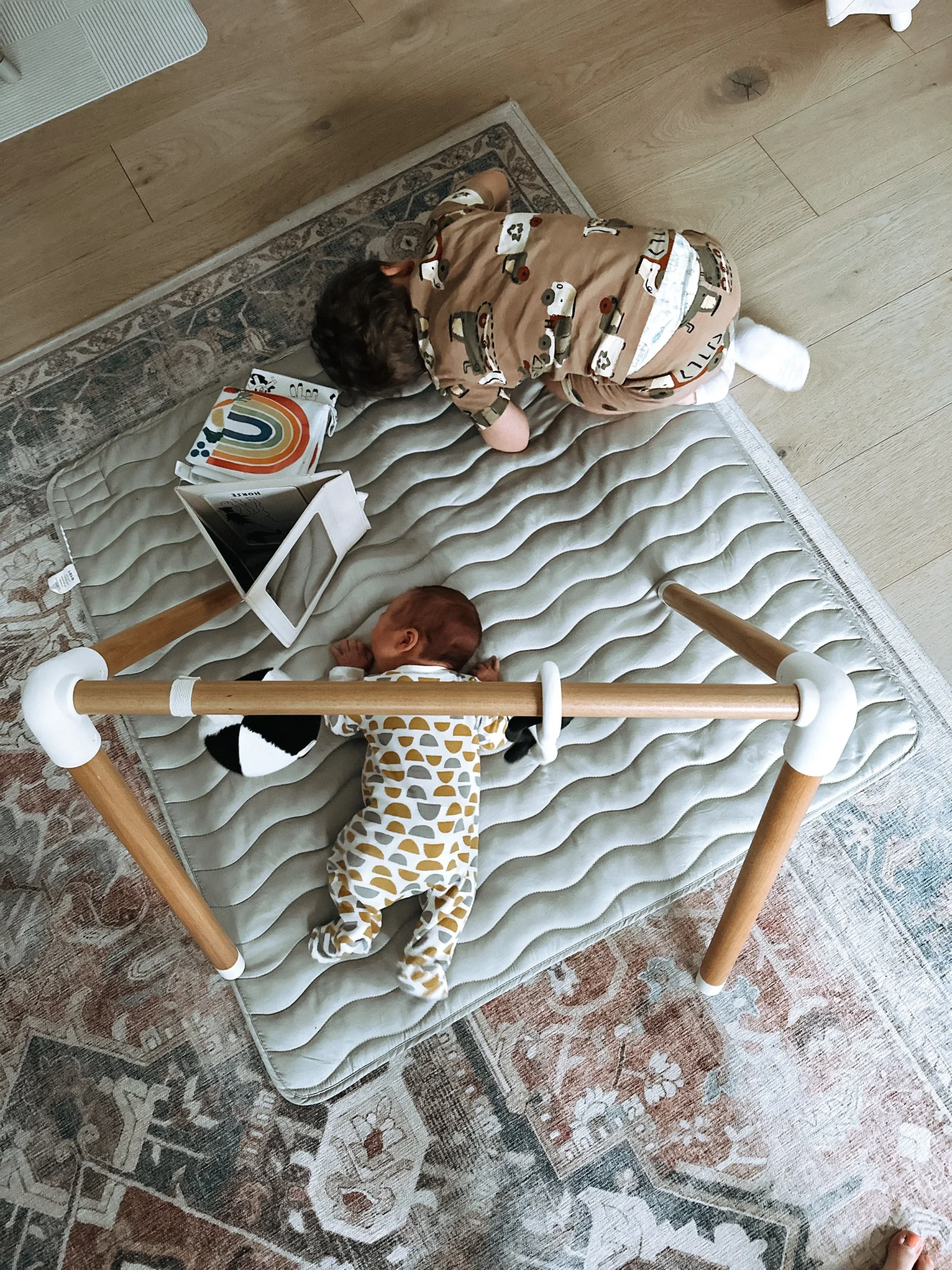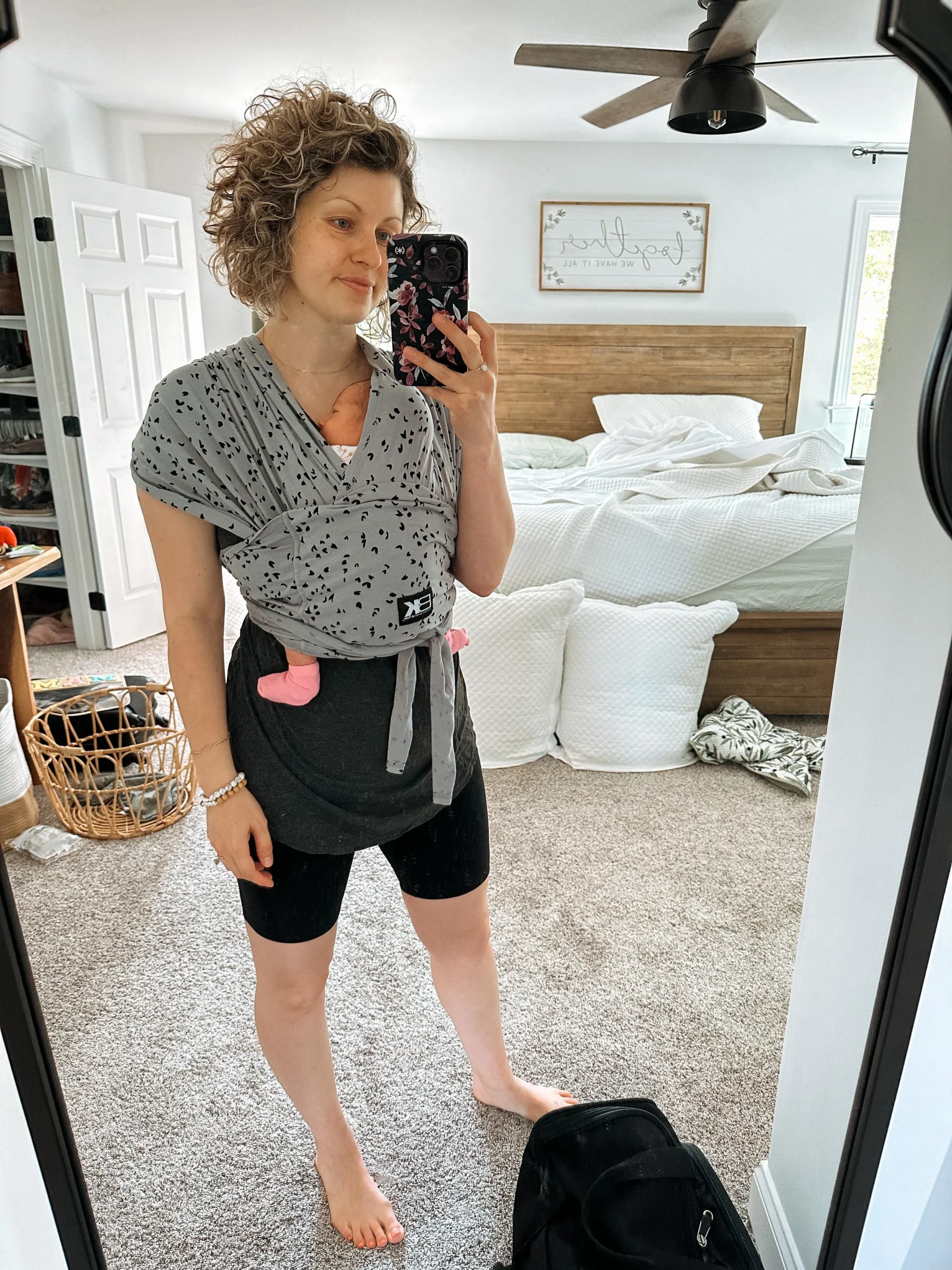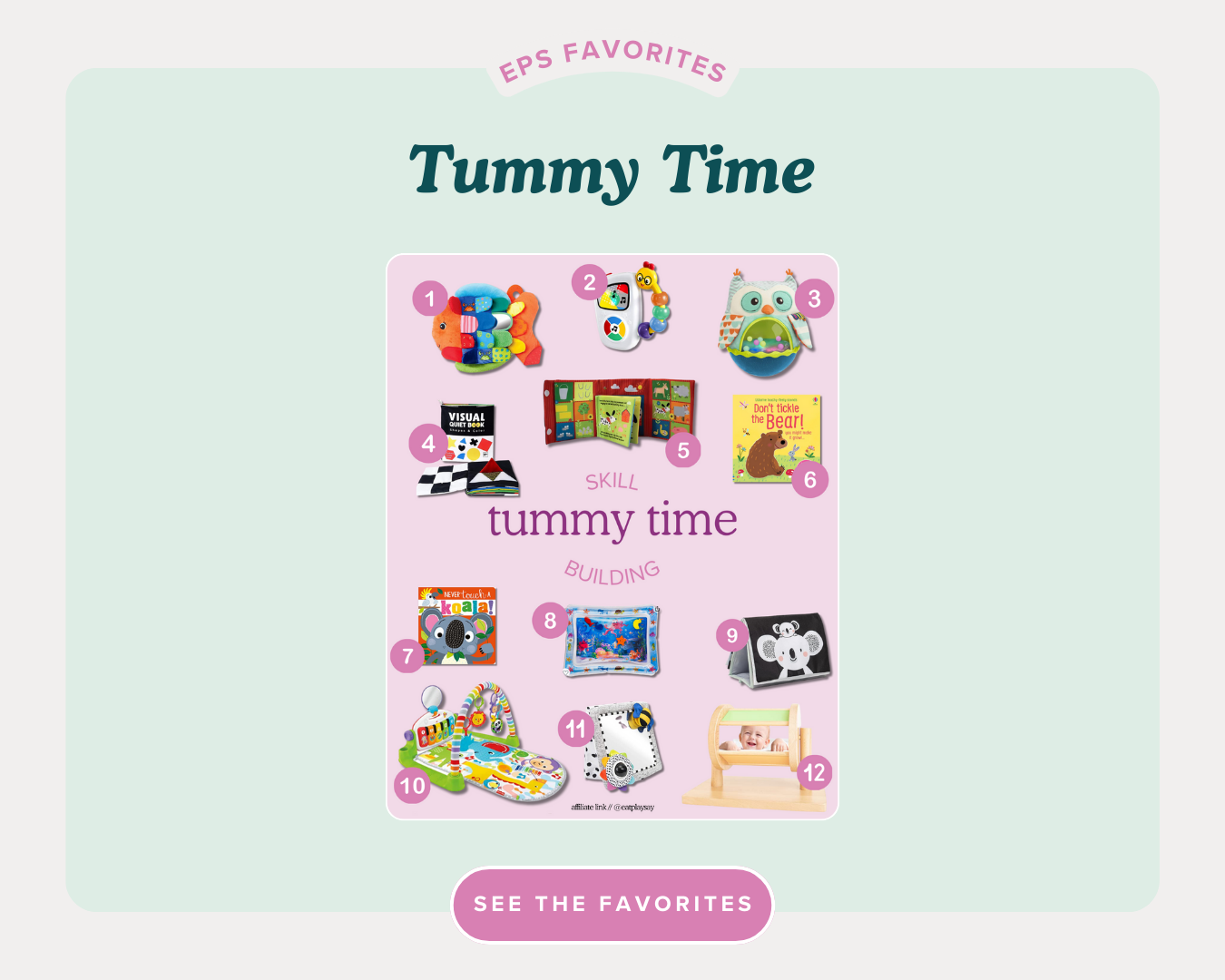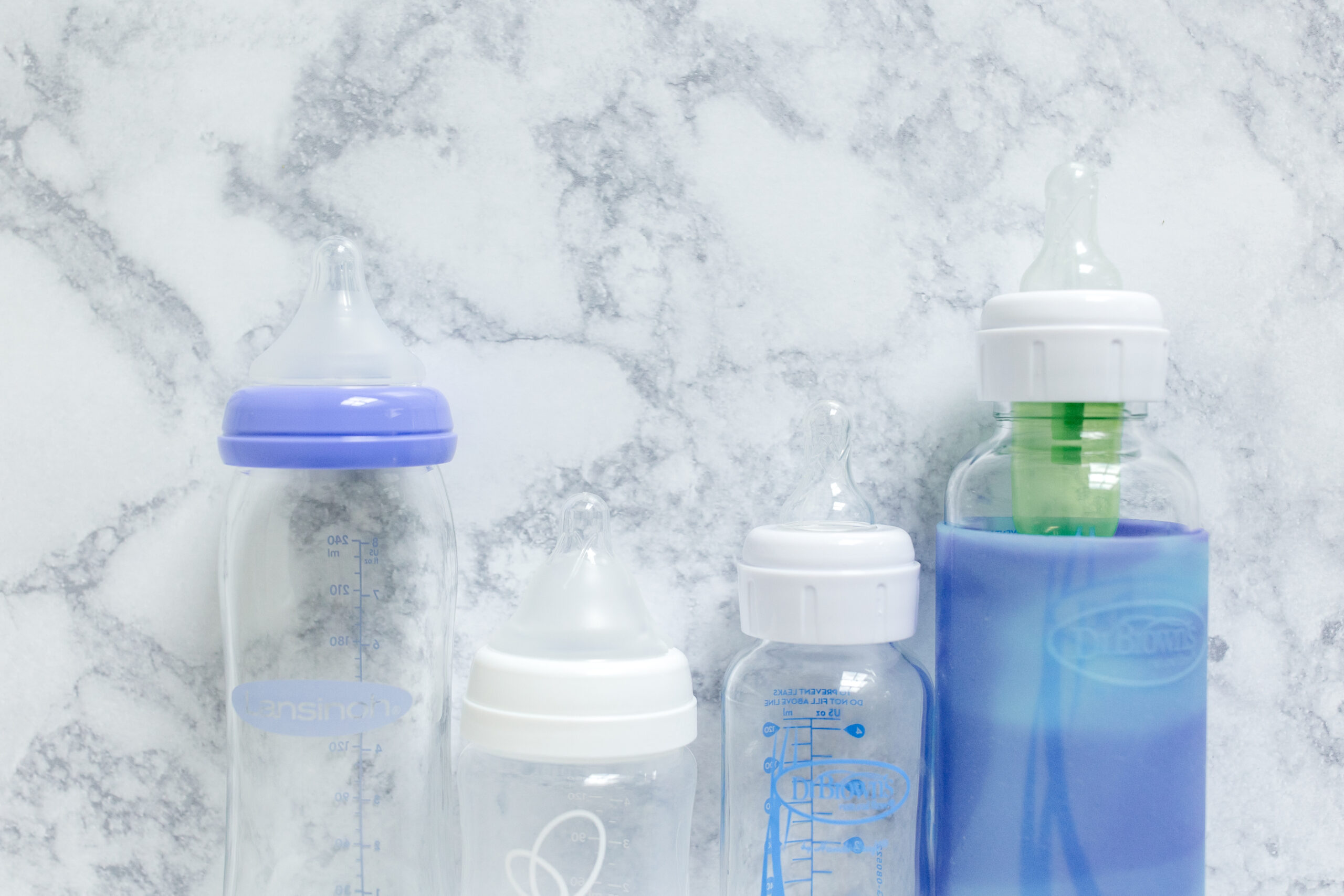This page contains affiliate links. We will receive a commission on qualifying purchases using these links.
Tummy time. The term we all hear and throw around, but secretly have SO MANY questions about. What exactly is ‘tummy time’? Why does my baby need it? When should I do it? How long should we do it? And the one most of us struggle with daily- How do I get my baby to enjoy it? I hear you!
I brought in some reinforcements for this blog: the pediatric occupational therapist on the team and I have broken it all down for you.
What is Tummy Time?
Tummy time is placing your baby on their stomach while they are AWAKE and supervised. It’s exactly what it sounds like.
Tummy time is an active play position and should be utilized during baby’s wake windows. The purpose of tummy time is to help strengthen baby’s muscles to get them ready to meet their developmental milestones (lifting head, rolling, sitting, crawling, and even walking) (1).
The Goal Of Tummy Time
What is the goal of tummy time? When placing baby in tummy time, you are first and foremost helping them learn and develop head control (lifting their head up).
While it seems like such a simple position for baby, it is actually incredibly dynamic and causes baby to utilize their back, stomach/core, neck, shoulder, and arm muscles (all at the same time!)
The initial goal is to help them learn how to lift that head up and see the world! Makes sense, but how do we get them to do this?
Let’s try something.
Pause what you are doing and look up at the ceiling. Most likely, as your eyes shifted up to the ceiling, your head tilted up as well. Maybe (if you are sitting at a table) you even put some weight through your forearms or sat up a little straighter to help you look up. So what does this tell us? Our body moves with our eyes! Helping your baby engage in tummy time and work on lifting that head up is all about how you are interacting with baby and what you are trying to get them to look at.
How long should baby do tummy time?
Currently, the AAP recommends tummy time 2-3 times per day for 3-5 minutes each time then building up that time as baby gets older and stronger (2).
Now this is a great goal, but we have to remember that all babies are different and tummy time is not going to look this way for everyone and that’s ok!
When thinking about tummy time, think ‘quality over quantity’. 1 minute of tummy time with a happy baby engaging with you, is going to be more beneficial than a forced 5 minutes of an unhappy baby screaming and crying.
Would you be excited to engage in something that you cried all the way through the day before? Probably not. Think about your own exercising. If you are not a runner, you cannot expect to go out and run 1 mile easily on the first day, it takes practice to build those muscles and stamina. It is the same for babies.
Start small and build up! If your baby tolerates tummy time for 30 seconds, great! Start with 30 seconds one day and aim for 45 seconds- 1 minute the next day. You will be AMAZED what just a short amount of successful tummy time can do for your baby’s strength, coordination, and confidence.
What Should Tummy Time Look Like?
Tummy Time at 0-1 Month
You can actually start practicing tummy time as soon as you get home from the hospital.
When bringing home your newborn, tummy time can be as simple as laying baby flat on the floor with their head turned to the side.
The first step in developing good tummy time practices is first getting baby used to being on their stomachs when they are awake. That sweet baby has been curled up in YOUR belly for the last 9 months and is not used to having any pressure or contact on THEIR belly. So just getting baby to practice laying on their belly is a perfect start!
Tummy Time at 2-3 Months
As baby gets more comfortable on their belly, they will begin to explore trying to lift their head up. You might see them try to push through their arms as they are exploring this new motion. You can help by placing them on their elbows (elbows directly under shoulders) to show them how to use their arms to help with getting the head lifted.
Placing high contrast visuals and toys directly in front of baby will help them continue to lift their head and keep it up for longer periods of time. Eventually, you will start seeing baby shift weight on their elbows and maybe even try to reach an arm out to the toy/visual in front of them. This is an amazing step and actually the very first step of your baby figuring out how to roll. Amazing!
Fun Fact: Tummy time does not always have to be laying your baby on the floor.
Here are 5 ways to practice tummy time with your 0-3 month old:
Babywearing
Babywearing is not only amazing way to bond with your baby, but it is also a great workout for those tummy time muscles when baby is away and looking around. Try talking to your baby to get their attention and as they look up at you, know you are also engaging them in tummy time practice. See our favorite baby carriers and wraps here!
And check out our Free Baby Registry Guide for more of our favorites for baby and mom!
Boppy Pillow
For this variation, position baby on their knees with their stomach laying on Boppy pillow and place their elbows on top of the pillow to help prop up their head/neck. Place high contrast toys at eye level or above to help baby start to lift that head up. If you don’t have a Boppy pillow, a rolled up blanket or towel will have the same effect!
Laying on Your Chest
Simply place your baby on your chest while you are in a reclined position (on the couch or bed). Talk, sing, and smile at your baby. They will love trying to look up at you.
Laying on Your Knees
While seated on a couch or chair, place baby on your lap with their head towards your knees. Hold high contrast cards out in front of baby’s head to encourage then to lift their head up
Use a Yoga Ball
This is an all time favorite! While sitting on the floor, place your baby on their belly on top of the yoga ball. Continue to hold them in place as you lightly rock them front to back and side to side. This small level of sensory input will help simulate the movements in the womb and should help calm baby while still getting some great tummy time work in.
Baby Can Do Hard Things
I know it can be intimidating, but just remember– the sooner you start practicing, the more comfortable and happy your baby will be on their stomachs.
If you have gone through these ideas and still feel like your baby is struggling with tummy time, that’s ok! I have another blog post for you with ideas about underlying causes, reflux ideas, and when to talk to your pediatrician or call Early Intervention: What if my Baby Hates Tummy Time?
This resource helps make all playtime fun!










